“The wines speak loudly of the place. But to really get a handle on this place, it helps to visit, and to allow yourself to be immersed in it,” writes Goode about Languedoc Wine Camp.
The Languedoc is an intriguing region, and over the last couple of hundred years it has had to reinvent itself a number of times. In the past there was a need for lots of wine. In France consumption per capita was well over 100 litres a year, and someone needed to make all this wine. So, with its benign climate, the Languedoc became a large factory for cheap wine to slake the thirst of France’s workers.
The Languedoc also became home to some of the country’s largest cooperative wineries, and the first French cooperative, Maurassin, was established here in 1901. At one stage, there were 500 cooperatives in the region, and the idea behind them was to grant power to the small growers through a collective approach. In this drive to meet volume requirements, the Languedoc’s special identity was somehow lost.
Because, at its heart, the Languedoc is a string of appellations all of which have their own personality, and all of which represent talented terroirs for growing wine grapes. And this is the latest reinvention of the region, at the heart of the Languedoc Wine Camp idea: this region is a source of fine wines, many of which are relatively undiscovered.
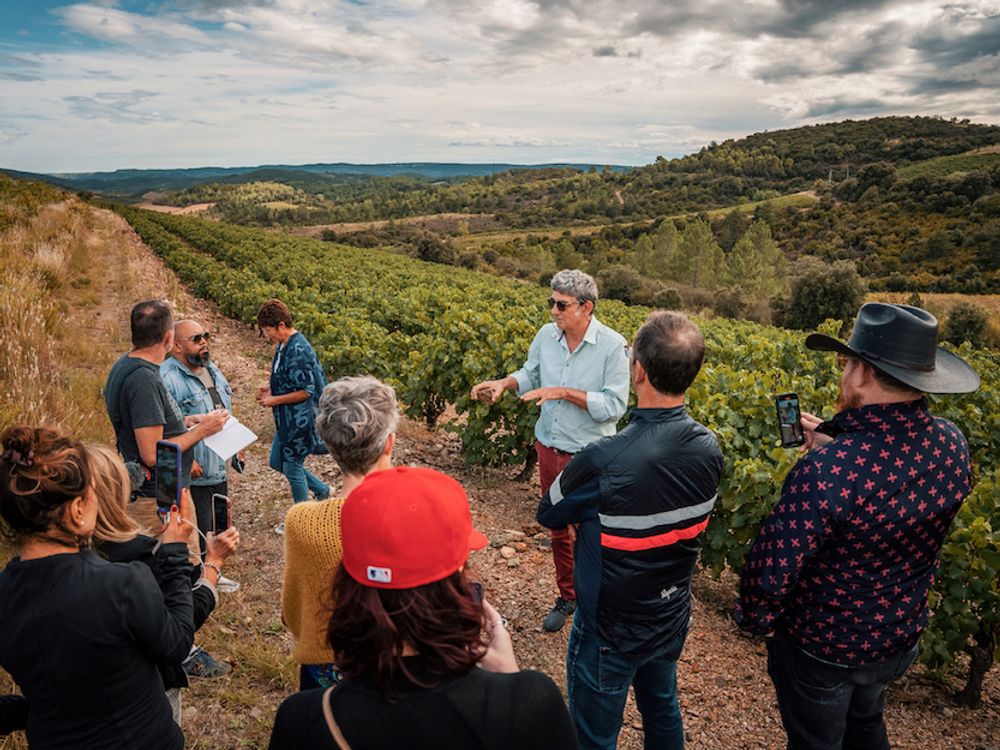
Visiting vineyards in Faugères and Saint-Chinian was a key part of understanding what the Languedoc is really all about
How Languedoc Wine Camp worked
Languedoc Wine Camp is a creative, innovative program. It’s a three-day immersion experience for small groups of wine professionals, and this was the first edition of a series of six held in the second half of 2021. The idea was to combine time in the vineyard with some structured learning, including group activities: learning by doing and experiencing. The group I was with included a fellow Brit, and the remainder were from the USA. We were a diverse group, but we worked together really well – everyone found their place.
The mornings were spent in the classroom, and then in the afternoon out in the vineyards. This included trips out to the vineyards of Saint-Chinian, Faugères (with the wonderful contrast of wines made on schist versus those on limestone) and Picpoul de Pinet. This was important. Heading out to vineyards emphasised the rugged beauty of the place, with a range of different landscapes, and a combination of light, space, intriguing geology, and – of course – the sea.

Where else to taste Picpoul de Pinet? In the Étang de Thau, a biodiverse saltwater lagoon which supplies a major part of France’s oyster production
We tasted quite a lot of wines, but we tried doing it a bit differently, using an ‘instinctive’ tasting method. The wines are served blind, and we are tasked with describing them in words that express impressions, sensations and emotions. Then we were asked to make a simple judgement based on the sole criterion of pleasure: do I like this wine, and why? Then there is a discussion based on these sensations and emotions.
This first edition was based in the remarkable winery of Château Castigno. We stayed in the nearby village of Assignan which has been bought in its entirety and renovated by the owner of Castigno, Marc Verstraete. This is a remarkable project, and emblematic of the sorts of changes that are taking place in the Languedoc. What was once presumably a remote, slightly run-down village has been transformed into a beautifully renovated luxury destination: Castigno Village. This includes a boutique hotel, and three restaurants, including one with a Michelin star. The concept is one of ‘slow tourism’, and it has been tastefully executed.
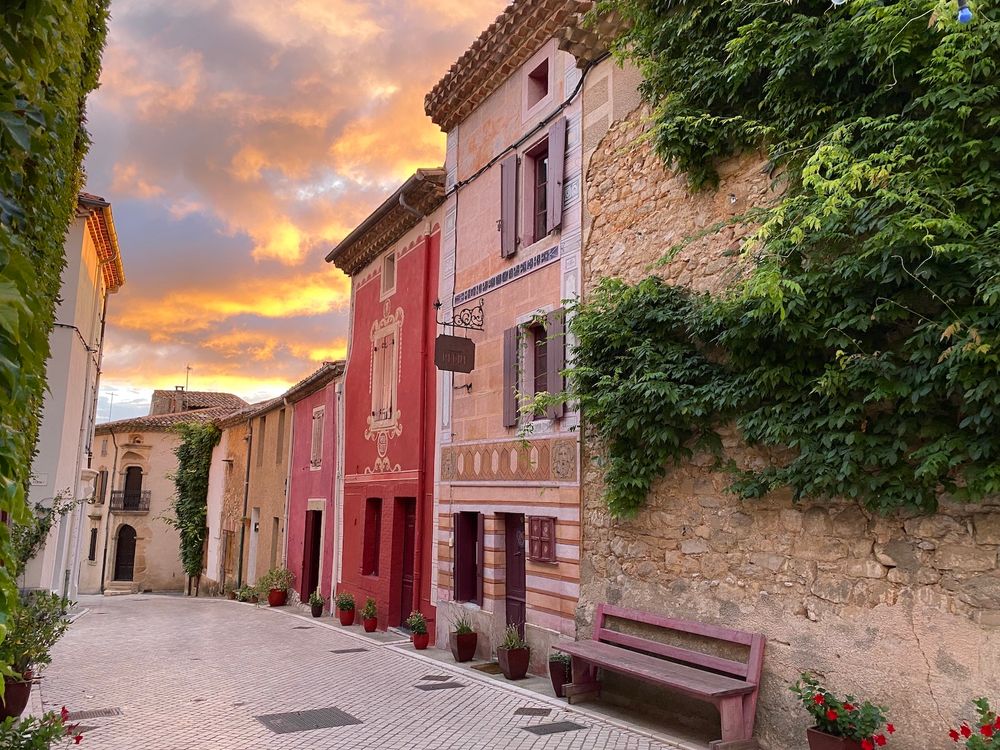
Assignan – where we stayed – had fallen on hard times after the distillery was closed but is now totally renovated
Château Castigno has 32 hectares of spectacularly situated vineyards, and a rather astonishing winery in the shape of a wine bottle, clad with cork. We were there during vintage, and witnessed the grapes being brought into the winery by Princess, a Percheron horse. A new winemaking team is in place here, and the cellar is full of concrete and large format oak. Expect interesting wines to emerge in the next few years, building on the already solid foundation there.
Back to the story of the region. In the 1980s, 100,000 hectares of vines were uprooted. There was a shift in focus to the hillside sites, generally capable of higher quality, and a modernisation of production facilities. Independent wineries began to emerge. In addition, new appellations were established.
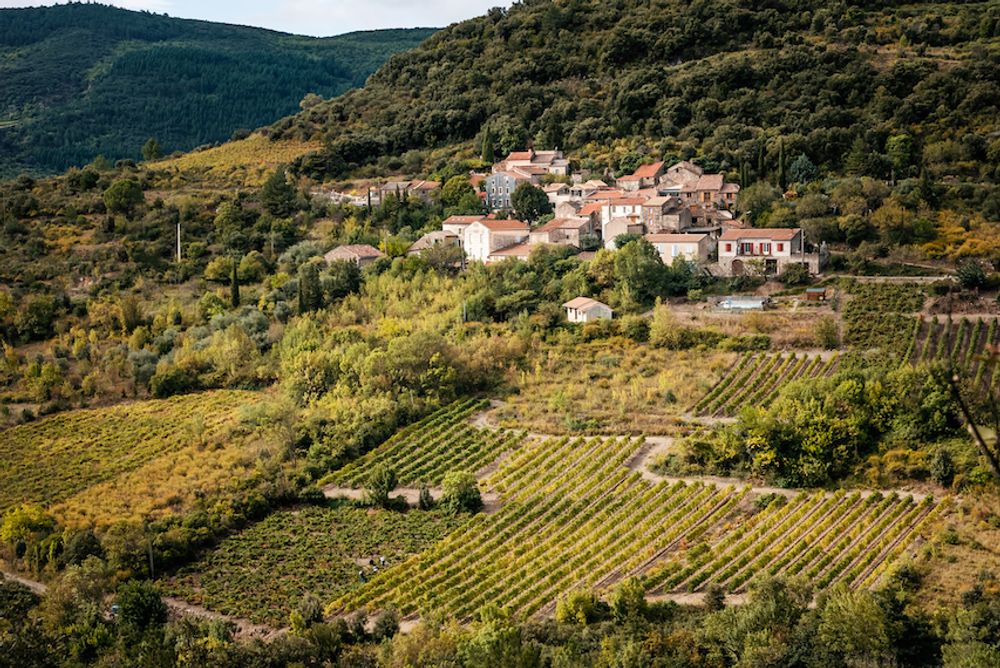
Saint-Chinian AOP
Faugères was established in 1982, and Pic St Loup in 2017 is the most recent. Of the 23 appellations in the region, nine are younger than 20 years old. The transition from volume to quality has progressed slowly but steadily. The dynamic of the region now is one of new winegrowers (Terrasses du Larzac has seen 30 new winegrowers established since it got the AOP in 2014), dynamic negociants, modernised cooperatives (there are still around 200, responsible for 70% of production) and larger family-owned estates.
Key features of the region
The climate here is ideal for vineyards. There are 300 days of sun. But there are also 200 days of wind. There’s the Tramontone, which is a fresh cold wind from the north. There’s the Cers, a cold wind from the Atlantic. Both of these bring nice weather. But then there’s the Marin, from the sea. This warm, humid wind can drive people crazy: it can blow for nine days, and starts and stops. The other two winds are the Pontant and Levant, but they are less important.
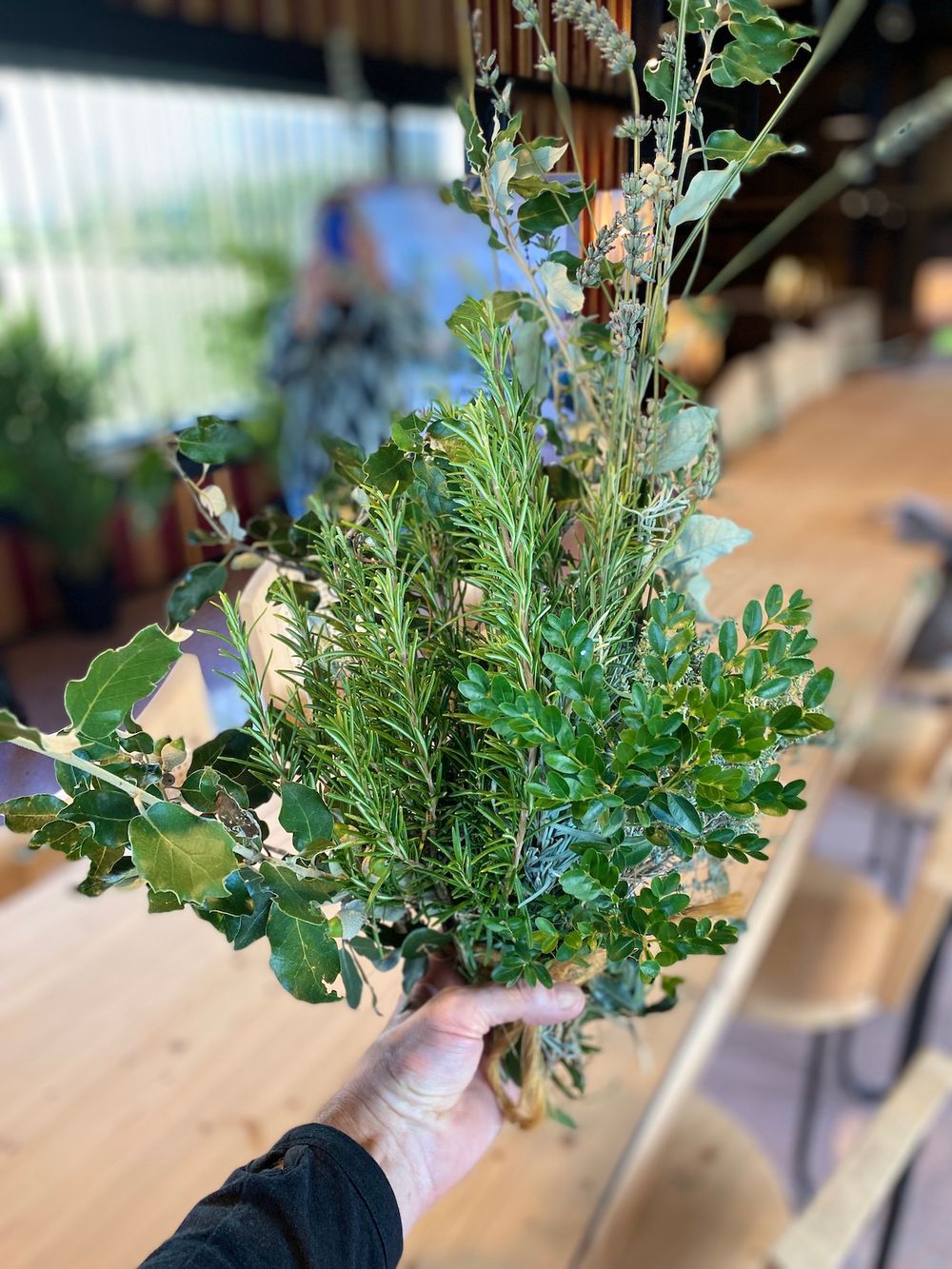
Garrigue is a term used a lot by wine writers but it was invaluable to get up-close-and-personal with it
A distinctive feature of this region is the native vegetation. The limestone-based soils here have garrigue, the famous aromatic vegetation including thyme, rosemary, lavender, spike lavender, juniper, boxwood and holm oak. Then on the acid soils such as schist, we have the maquis, which includes sage, bay, lavender, heather and arbutus. This vegetation is hugely aromatic, and on a warm day it’s easy to see why so many tasting notes of reds from the region have the term ‘garrigue’ in them.
Soils are also interesting, although in many places there isn’t much soil: it seems as if the vineyards have been planted in pure rock. Anyone with an interest in vineyard soils would have a field day here. There are some amazing limestone terroirs, then there’s schist, there’s classic clay/limetone, there are large alluvial stones, and then there’s red clay. And variations on all of these.

A field day for geologists
While many have planted famous international varieties in the region, the AOP Languedoc wines are made from traditional varieties well suited to the climate and soils here, and most often they are blended together.
The wines speak loudly of the place. But to really get a handle on this place, it helps to visit, and to allow yourself to be immersed in it. Over three days, we felt we’d just begun, and came back enthused by what we’d seen.
Some top wines tasted at Languedoc Wine Camp
WHITES
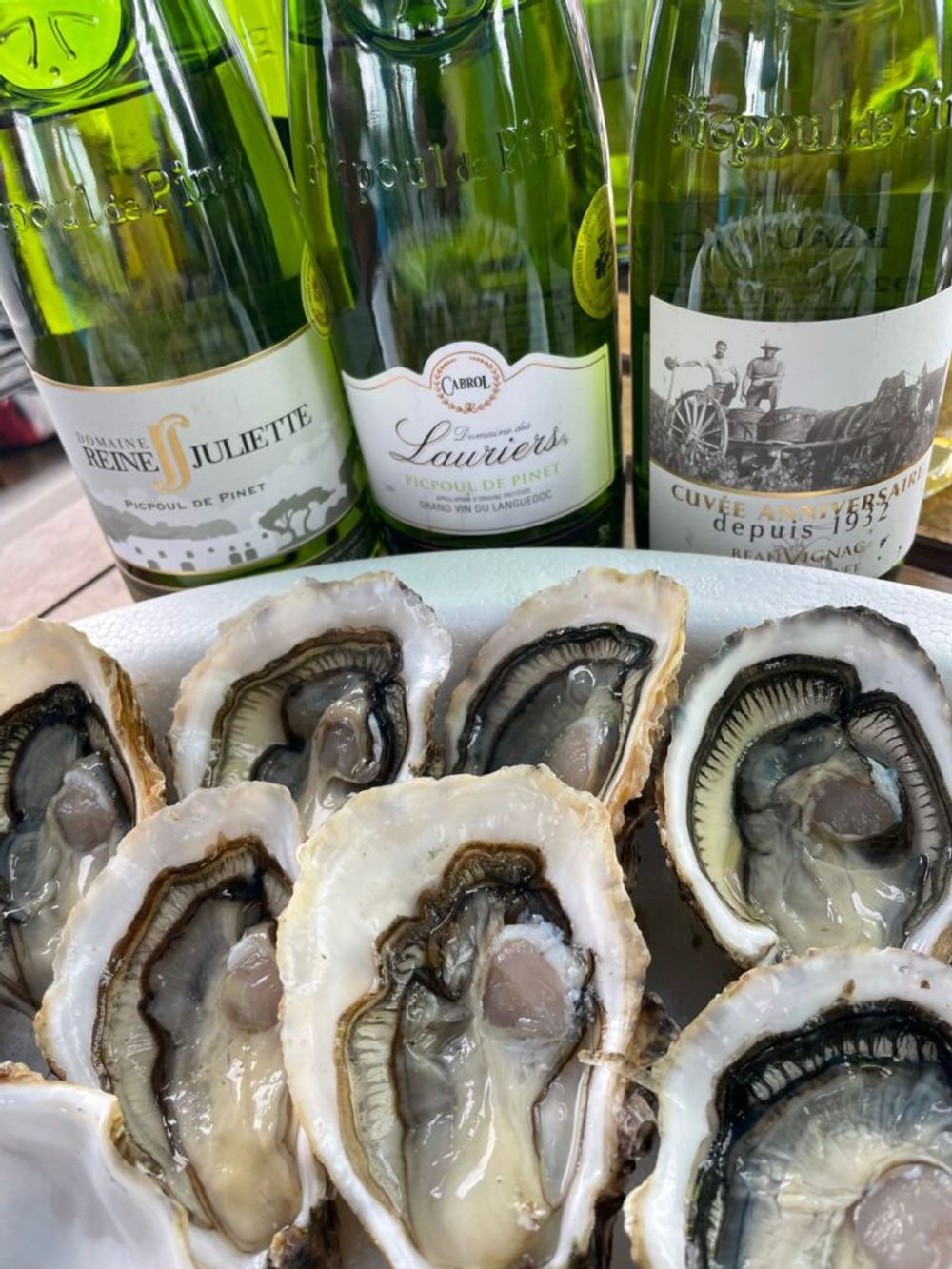
Château Reine Juliette 2020 AOP Picpoul de Pinet, France
Lively and intense with grapefruit and lemons, as well as nice salty hints. This has really nice presence with a mineral edge to the fruit. It’s really fine and expressive. 94/100
Domaine Maxime Magnon La Begou 2019 AOP Corbières, France
Old vines: 50% Grenache Gris, 35% Grenache Blanc, 15% Carignan Gris. This is intensely aromatic with lemons and spice. It’s keen and mineral on the palate with some lively acidity, and with some spicy depth. This has a lovely acid line and is really juicy, fine and balanced. 94/100
Domaine Ollier-Taillefer Allegro Blanc 2020 AOP Faugères, France
A 50/50 blend of Rolle (Vermentino) and Roussanne from schist soils. Destemmed, pressed and then fermented and aged in stainless steel. This has lovely fruit, with grapefruit, pear, lemons and some spiciness. There’s a touch of mandarin brightness. This is really fine, with the focus on bright fruit. 93/100
Bréchallune La Croix Gratiot 2020 AOP Picpoul de Pinet, France
Lively, bright and taut with focused citrus and pear fruit. Very expressive and fruit driven with good acidity and some crystalline character. Lovely stuff: mineral and taut. 93/100
Château Castigno Blanc 2019 AOP Saint-Chinian, France
This is a blend of 55% Roussanne, 40% Grenache Blanc and 5% Carignan Blanc, fermented in 500 litre barrel (the Rousanne portion) and terracotta amphorae. It shows wax, nuts, spice and some woody hints, but also some white pepper. Stylish and textural with pear, apple and citrus fruit, with some fine spiciness. This has potential for development. 92/100
REDS
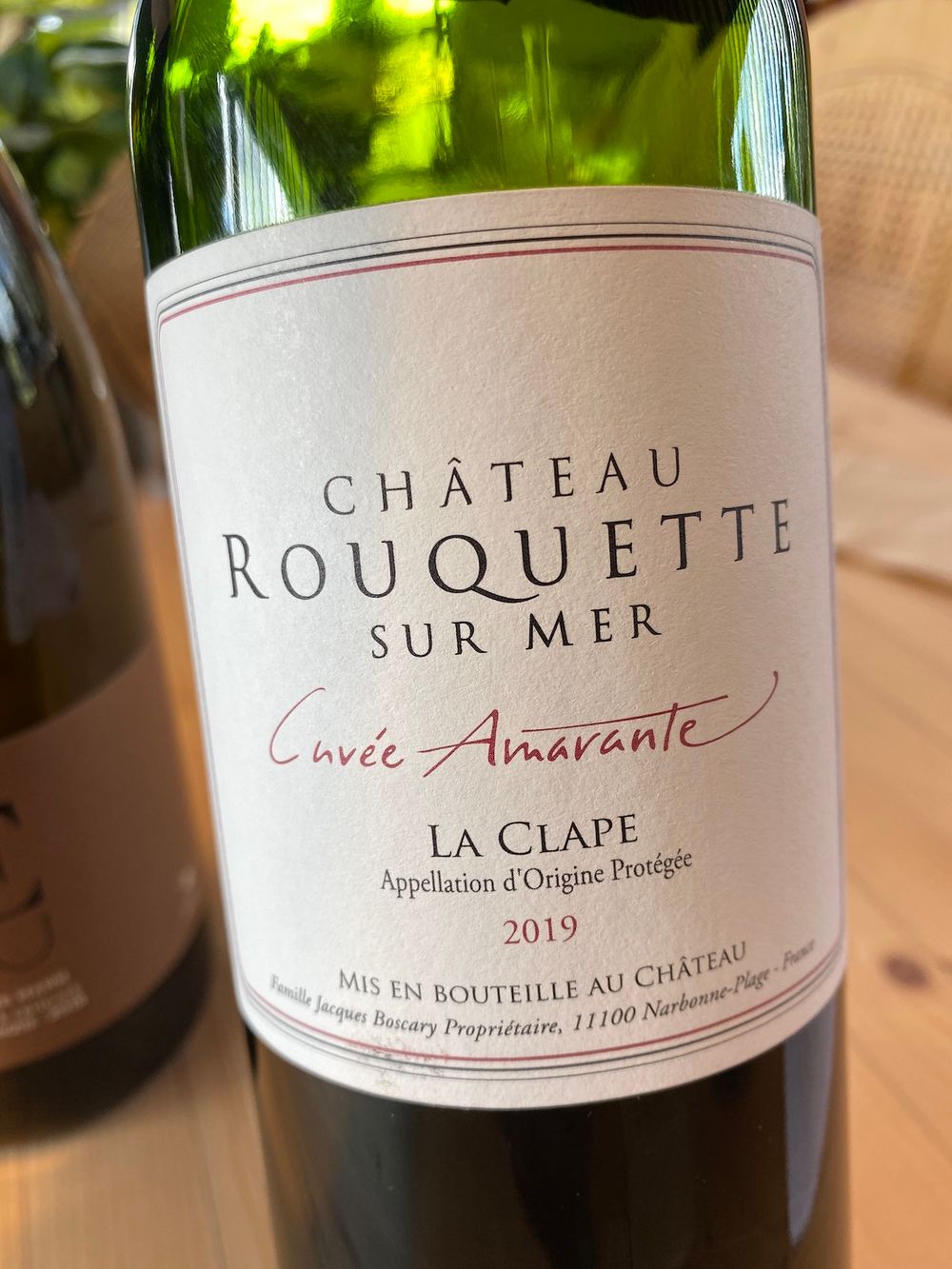
Château Rouquette Sur Mer Cuvée Amarante 2018 AOP La Clape, France
Grenache 30%, Syrah 30%, Carignan 20%, Mourvèdre 20%. Elegant with sweet cherries and plums, and nice lushness. Has some meat and olive savouriness, showing smoothness and freshness. Expressive with lovely structure and also some finesse. Serious stuff, showing great balance. A real bargain. 95/100
Domaine Les Aurelles Aurel Rouge 2014 AOP Languedoc Pézenas, France
Elegant and refined with red cherries and plums, and showing superb balance. This is well defined and beautifully structured with real poise and finesse. Lovely elegant red fruits. 95/100
Borie La Vitarèle Les Terres Blanches 2019 AOP Saint Chinian, France
Very bright and fresh with lovely focus. This has bright, juicy cherry fruit with a nice warm spiciness. Juicy and linear with great definition, showing supple red fruits and great concentration. Stylish, fresh and bright around the edges. 94/100
Domaine de Cabrol La Dérive 2017 AOP Cabardès, France
Rich, intense, ripe and a bit meaty with nice black cherry and raspberry fruit, with some olive notes. Powerful and saline: has lovely intensity and freshness but also ripeness. Wild and wonderful. 94/100
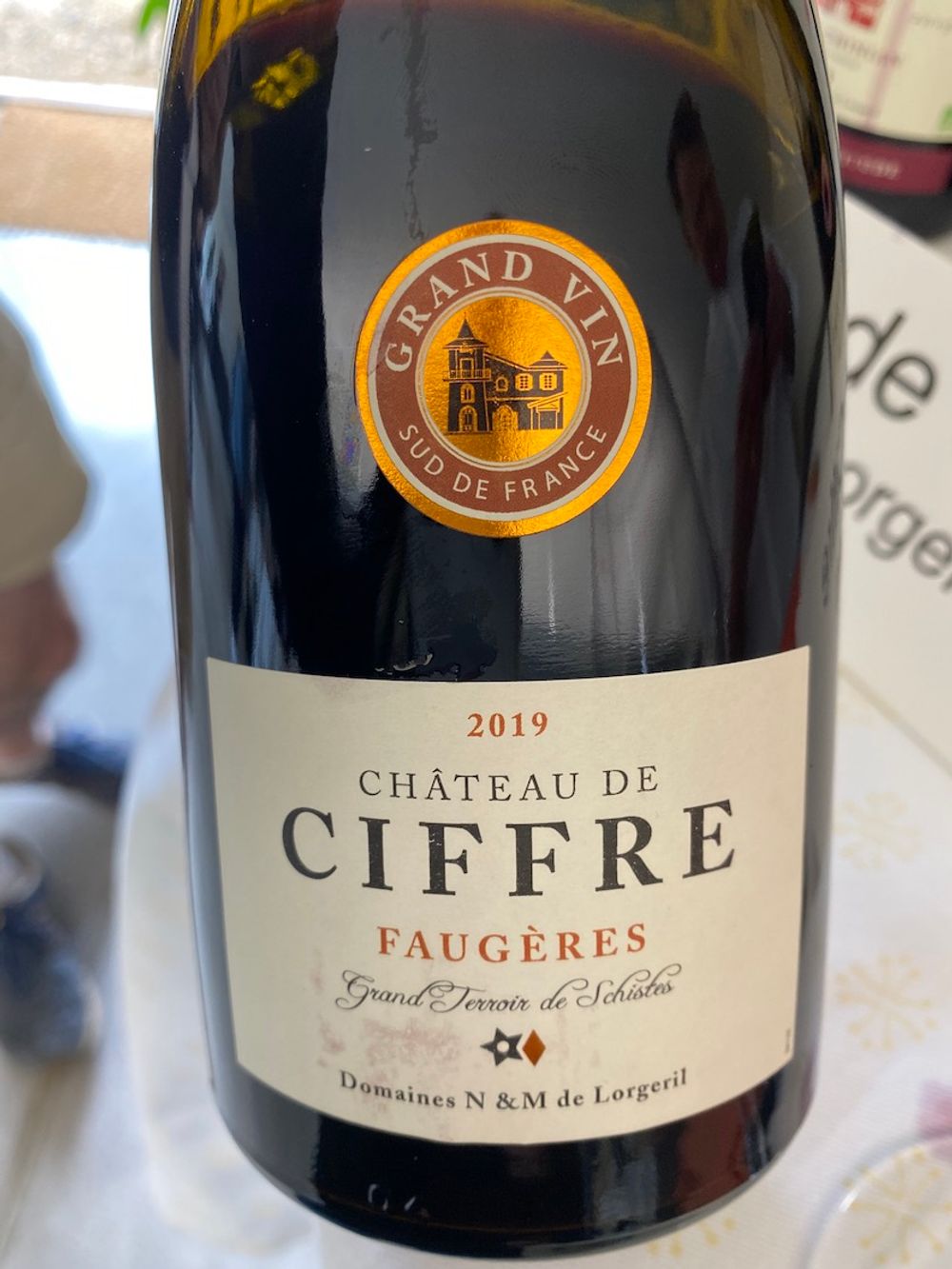
Château de Ciffre Grand Vin 2019 AOP Faugères, France
Fresh, lively and detailed with lovely cherry fruit and some raspberry. Dark and gravelly with mid-palate richness. Shows textured cherries and plums, but with some grunt. 94/100
Château de l’Engarran 2017 AOP Languedoc Grès de Montpellier, France
A blend of 67% Syrah, 23% Grenache, 10% Mourvèdre. Very aromatic with floral red fruits, olives and cured meat. Nice bright cherry and plum fruit with nice silkiness, showing brightness and freshness. Sweet fruit to the fore, with good acidity. 94/100
Clos Marie L’Olivette 2019 Pic Saint-Loup, France
Grenache 40 %, Syrah 40%, Mourvèdre 10 %, Cinsault 10%. This may be Clos Marie’s entry level wine, but it’s really good. Lively and bright, with fresh, focused red fruits, some spice, a touch of cherry and also some orange peel. With good acidity, this is nicely structured and has real appeal. 94/100
Mas des Caprices ZE Fitou 2018, AOP Fitou, France
Mainly Mourvèdre and Carignan, biodynamic farming. Fresh style with appealing olive and meat notes providing a savoury dimension. Well defined, elegant and structural with nicely balanced red fruits. Bright cherries and plums, showing finesse. 94/100
Château La Négly La Falaise 2018 AOP La Clape, France
La Clape is a coastal appellation and La Négly are making some lovely wines here. Lovely texture here: sweet cherries and plums to the fore. Silky, generous and broad textured. Luxurious, ripe and pure. It’s a really ripe style, but well done. 94/100
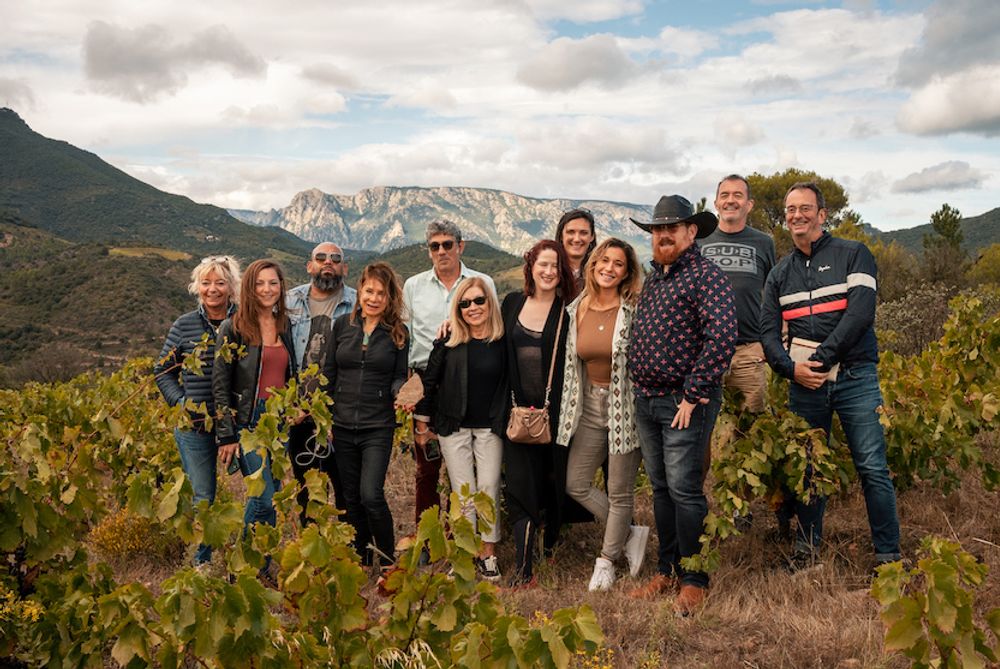
If you are a wine buyer, importer, sommelier or member of the media and want to attend one of next year’s Languedoc Wine Camps then please contact Estelle Nijhof on enijhof@languedoc-wines.com.










































